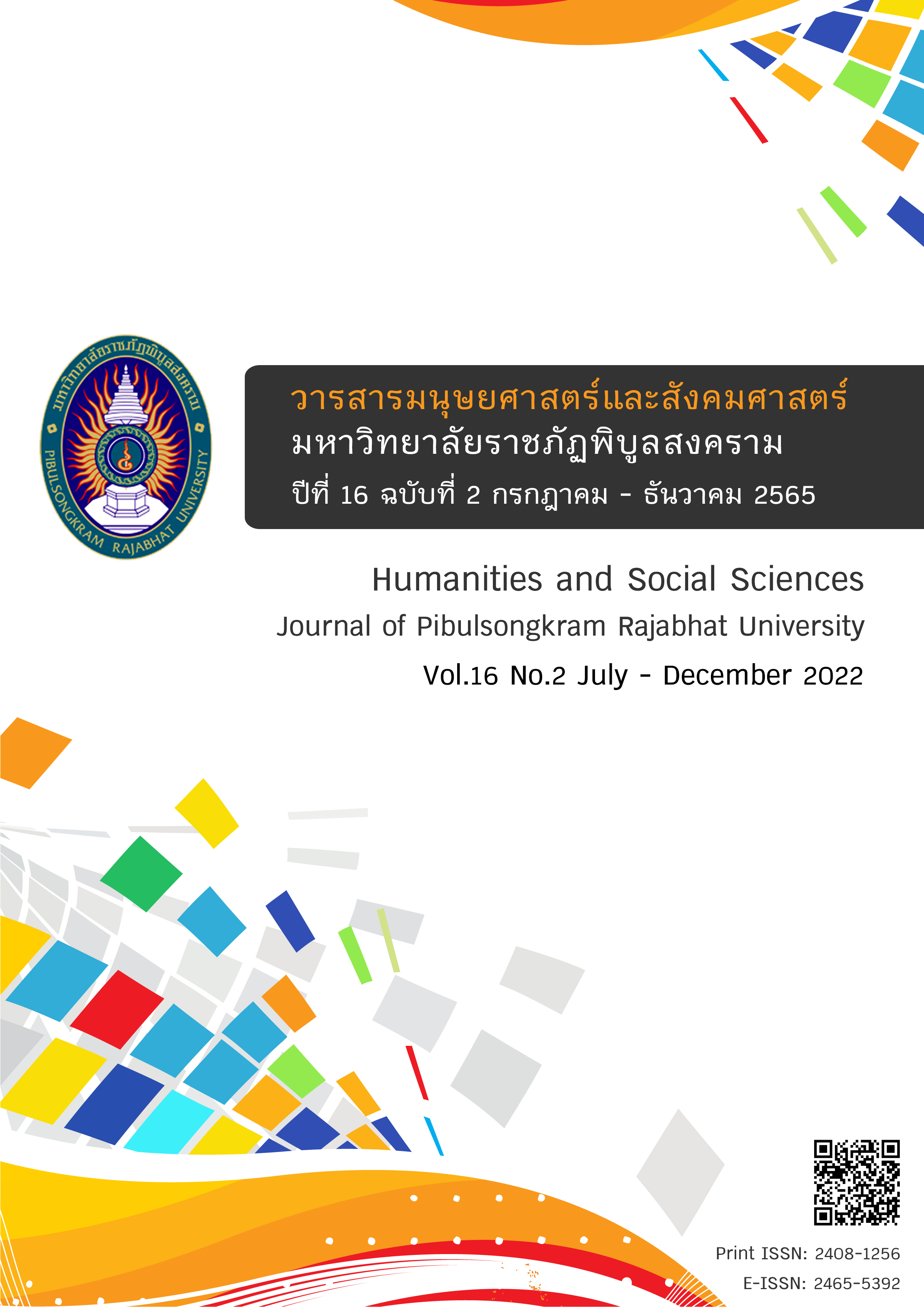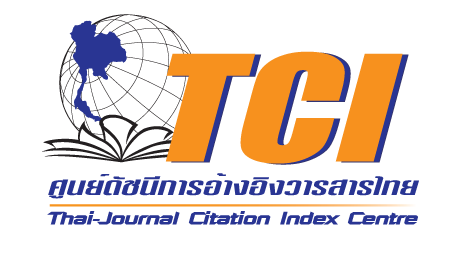การสร้างความได้เปรียบทางการแข่งขันอย่างยั่งยืนในภาคเกษตรโดยการใช้ตัวแบบ VRIO
DOI:
https://doi.org/10.14456/psruhss.2022.31คำสำคัญ:
ความยั่งยืน , ความได้เปรียบทางการแข่งขัน , ตัวแบบ VRIOบทคัดย่อ
การผลิตสินค้าเกษตรของประเทศไทยเป็นกิจกรรมหนึ่งที่มีปัจจัยต่าง ๆ เข้ามาเกี่ยวข้องกับการผลิตทั้งด้านสภาพดินฟ้าอากาศ สิ่งแวดล้อม พื้นที่เพาะปลูก รวมถึงการกำหนดราคาที่ขึ้นอยู่กับราคาตลาด อีกทั้งสินค้าเกษตรบางชนิดมีอายุในการเก็บรักษาต่ำทำให้ต้องรีบเร่งในการกระจายสินค้าเพื่อจำหน่ายให้ทันก่อนที่จะเน่าเสีย นอกจากนี้สินค้าเกษตรยังต้องเผชิญกับการแข่งขันสูงซึ่งส่งผลให้ในบางรอบการผลิตมีสินค้าล้นตลาด ทำให้เกิดการแข่งขันกันมากขึ้น ด้วยปัจจัยต่าง ๆ รวมกับความไม่แน่นอนที่เกิดขึ้น จึงทำให้ศักยภาพทางการแข่งขันในตลาดลดน้อยลงด้วยเช่นกัน ในบทความนี้จะกล่าวถึงอีกแนวทางหนึ่งที่จะช่วยเพิ่มขีดความสามารถและความได้เปรียบทางการแข่งขัน โดยการใช้ตัวแบบ VRIO ตามแนวคิดการยึดถือทรัพยากรเป็นสำคัญ (Resource-Based View) โดยพิจารณาถึงทรัพยากรที่มีคุณค่าและสามารถเพิ่มคุณค่าให้กับผู้บริโภค รวมถึงทรัพยากรต่างๆที่หาได้ยากและยากต่อการเลียนแบบเมื่อต้องอยู่ท่ามกลางการแข่งขันอย่างรุนแรงของตลาด และยังช่วยให้องค์กรทำการวิเคราะห์ความได้เปรียบ เพื่อที่องค์กรจะนำเอาทรัพยากรนั้น ๆ มาสร้างความได้เปรียบทางการแข่งขันที่ยั่งยืนได้
เอกสารอ้างอิง
Ariyani, W., & Daryanto, A. (2018). Operationalization of Internal Analysis Using the VRIO Framework: Development of Scale for Resource and Capabilities Organization (Case Study: XYZ Company Animal Feed Business Unit). Asian Business Research Journal, 3, 9-14.
Barney, J. (1991). Firm resources and sustained competitive advantage. Journal of management, 17(1), 99-120.
Barney, J. B. (1995). Looking inside for competitive advantage. Academy of Management Perspectives, 9(4), 49-61.
Barney, J. B. (1997). Gaining and Sustaining Competitive Advantage. MA: Addison-Wesley.
Barney, J. B. (2002). Gaining and sustaining competitive advantage. NJ: Prentice Hall.
Barney, J. B., & Clark, D. N. (2007). Resource-based theory: Creating and sustaining competitive advantage. Oxford: Oxford University.
Barney, J. B., & Hesterly, W. S. (2010). Strategic Management Competitive Advantage, Concepts and Cases. Pearson.
Becker, G. S. (1964). Human capital: A theoretical and empirical analysis, with special reference to education. New York: National Bureau of Economic Research/Columbia University Press.
David, F. (2013). Strategic management: A competitive advantage approach, concepts & cases (15th Ed.). New Jersey: Prentice Hall.
Geraldes, R., da Costa, R. L., & Geraldes, J. (2019). VRIO FRAMEWORK-STATIC OR DYNAMIC?. In the EURAM 26 – 28 June 2019 (European Academy of Management) Conference (p. 1-38). Portugal: Lisboa.
Grant, R. M. (1991). The resource-based theory of competitive advantage: implications for strategy formulation. California management review, 33(3), 114-135.
Kerth, K., Asum, H., & Stich, V. (2015). Die besten Strategietools in der Praxis: Welche Werkzeuge brauche ich wann? Wie wende ich sie an? Wo liegen die Grenzen? Carl Hanser Verlag GmbH Co KG, München.
Knott, P. J. (2015). Does VRIO help managers evaluate a firm’s resources?. Management Decision, 53(8), 1806-1822.
Miethlich, B., & Oldenburg, A. G. (2019). The Employment of Persons with Disabilities as a Strategic Asset: A Resource-Based-View using the Value-Rarity-Imitability-Organization (VRIO) Framework. Journal of Eastern Europe Research in Business and Economics, 1, 1-13.
Pesic, M. A., Milic, V. J., & Stankovic, J. (2013). APPLICATION OF VRIO FRAMEWORK FOR ANALYZING HUMAN RESOURCES’ROLE IN PROVIDING COMPETITIVE ADVANTAGE. Tourism & Management Studies, 575-586.
Porter, M. E. (2008) Competitive Strategy: Techniques for Analyzing Industries and Competitors. Simon and Schuster, New York.
Rothaermel, F. (2013). Strategic Management: Concept and Cases. London: McGraw-Hill Education – Europe.
Rothaermel, F. T. (2013). Strategic Management: Concepts and Cases. McGraw-Hill Irwin.
Rumelt, R. P. (1984). Towards a strategic theory of the firm. Competitive strategic management, 26(3), 556-570.
Seo, B. G., Park, D. H., & Choi, D. (2016). Innovative service concept generation based on integrated framework of design thinking and VRIO: the case of information supporting system for SMEs in Korea. In Proceedings of the 18th Annual International Conference on Electronic Commerce: e-Commerce in Smart connected World (pp. 1-5). Republic of Korea.
Tomer, J. F. (1987). Organizational Capital: The Path to Higher Productivity and Well-Being Praeger. Journal of Economic Behavior and Organization, 11, 453-55.
Williamson, O. E. (1975). Markets and hierarchies: Analysis and antitrust implications. New York: Free Press.
ดาวน์โหลด
เผยแพร่แล้ว
รูปแบบการอ้างอิง
ฉบับ
ประเภทบทความ
สัญญาอนุญาต
ลิขสิทธิ์ (c) 2021 วารสารมนุษยศาสตร์และสังคมศาสตร์ มหาวิทยาลัยราชภัฏพิบูลสงคราม

อนุญาตภายใต้เงื่อนไข Creative Commons Attribution-NonCommercial-NoDerivatives 4.0 International License.
บทความหรือข้อคิดเห็นใดใดที่ปรากฏในวารสารมนุษยศาสตร์และสังคมศาสตร์ มหาวิทยาลัยราชภัฏพิบูลสงครามเป็นวรรณกรรมของผู้เขียน ซึ่งบรรณาธิการไม่จำเป็นต้องเห็นด้วย บทความที่ได้รับการตีพิมพ์เป็นลิขสิทธิ์ของวารสารมนุษยศาสตร์และสังคมศาสตร์ มหาวิทยาลัยราชภัฏพิบูลสงคราม









